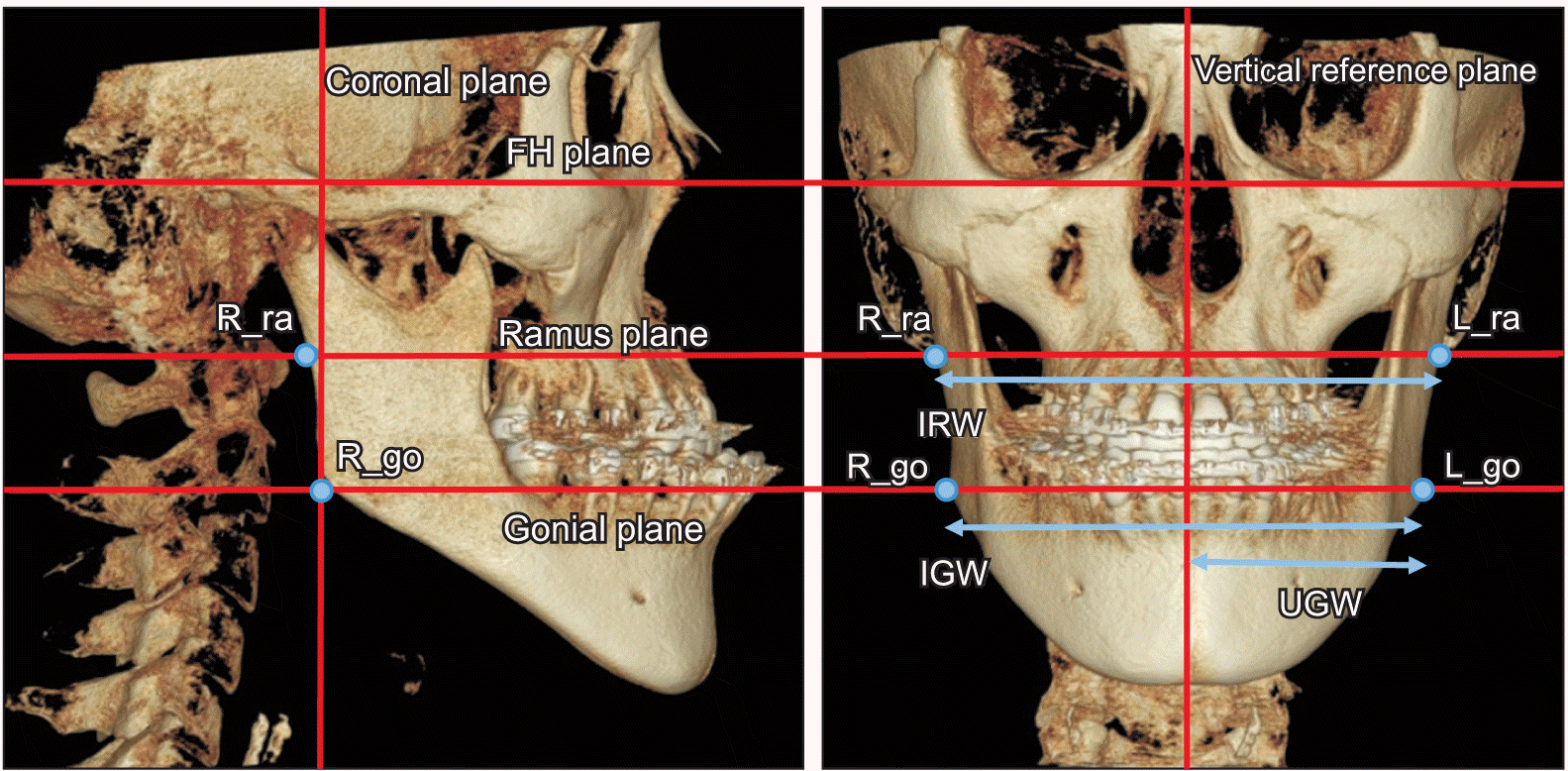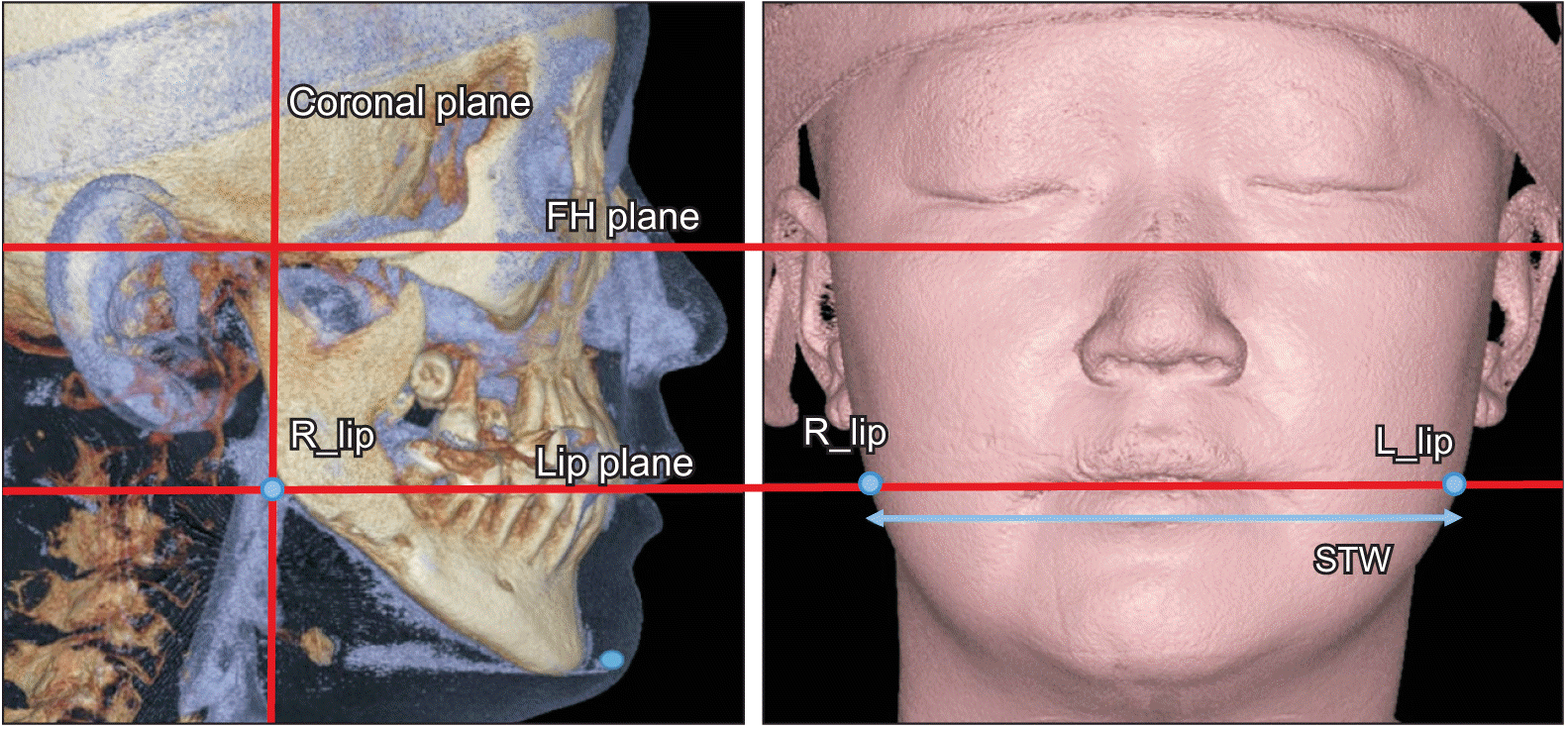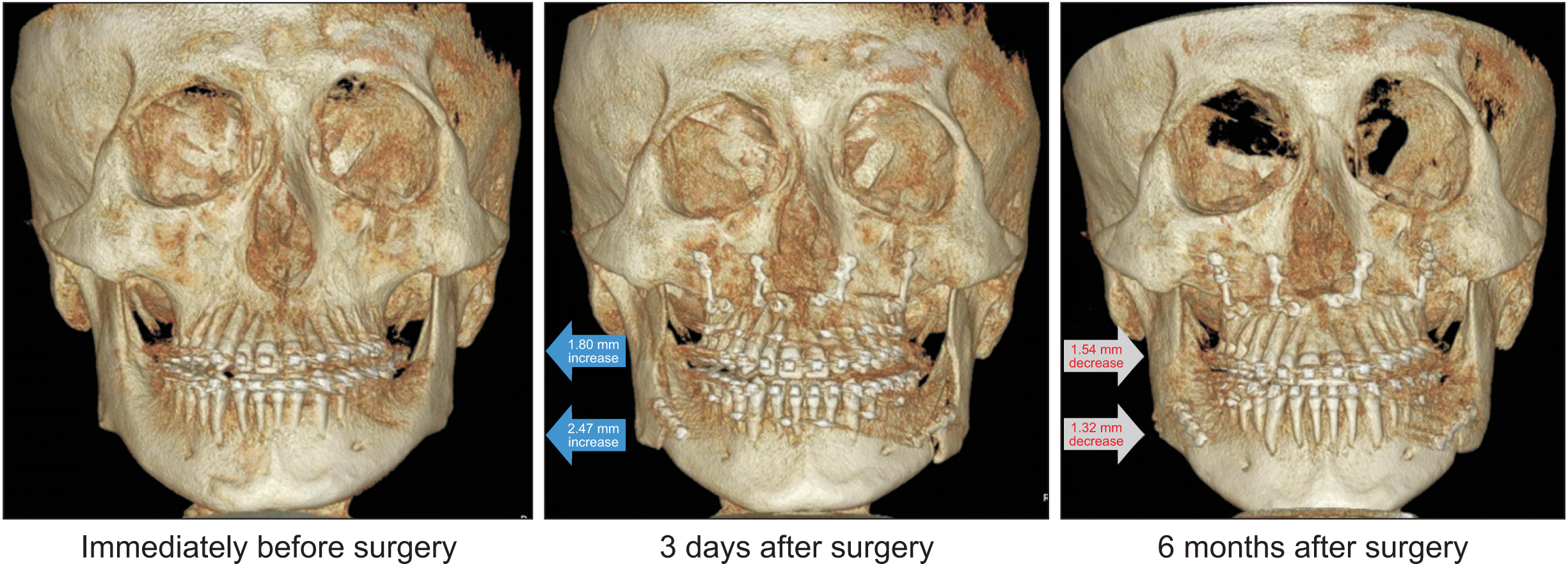1. Jang KS, Bayome M, Park JH, Park KH, Moon HB, Kook YA. 2017; A three-dimensional photogrammetric analysis of the facial esthetics of the Miss Korea pageant contestants. Korean J Orthod. 47:87–99. DOI:
10.4041/kjod.2017.47.2.87. PMID:
28337418. PMCID:
PMC5359635.
2. Kim SK, Han JJ, Kim JT. 2001; Classification and treatment of prominent mandibular angle. Aesthetic Plast Surg. 25:382–7. DOI:
10.1007/s002660010150. PMID:
11692255.
3. Yang WS. 1995; The study on the orthodontic patients who visited Department of Orthodontics, Seoul National University Hospital during last 10 years (1985-1994). Korean J Orthod. 25:497–509.
5. Busby BR, Bailey LJ, Proffit WR, Phillips C, White RP Jr. 2002; Long-term stability of surgical class III treatment: a study of 5-year postsurgical results. Int J Adult Orthodon Orthognath Surg. 17:159–70. PMID:
12353934.
6. Proffit WR, Phillips C, Dann C 4th, Turvey TA. 1991; Stability after surgical-orthodontic correction of skeletal Class III malocclusion. I. Mandibular setback. Int J Adult Orthodon Orthognath Surg. 6:7–18. PMID:
1940541.
7. Choi HS, Rebellato J, Yoon HJ, Lund BA. 2005; Effect of mandibular setback via bilateral sagittal split ramus osteotomy on transverse displacement of the proximal segment. J Oral Maxillofac Surg. 63:908–16. DOI:
10.1016/j.joms.2004.06.064. PMID:
16003615.
8. Choi WH, Kim JH, Park YW. 2003; A clinical study on the effects of bilateral sagittal split ramus osteotomy on the postoperative condylar positional changes in the mandibular prognathism. J Korean Assoc Maxillofac Plast Reconstr Surg. 25:525–32.
9. Yoo JY, Kwon YD, Suh JH, Ko SJ, Lee B, Lee JW, et al. 2013; Transverse stability of the proximal segment after bilateral sagittal split ramus osteotomy for mandibular setback surgery. Int J Oral Maxillofac Surg. 42:994–1000. DOI:
10.1016/j.ijom.2013.01.021. PMID:
23538214.
10. Yeo BR, Han JJ, Jung S, Park HJ, Oh HK, Kook MS. 2018; Horizontal changes of the proximal mandibular segment after mandibular setback surgery using 3-dimensional computed tomography data. Oral Surg Oral Med Oral Pathol Oral Radiol. 125:14–9. DOI:
10.1016/j.oooo.2017.07.002. PMID:
28958899.
11. Lim SY, Jiang T, Oh MH, Kook MS, Cho JH, Hwang HS. 2017; Cone-beam computed tomography evaluation on the changes in condylar long axis according to asymmetric setback in sagittal split ramus osteotomy patients. Angle Orthod. 87:254–9. DOI:
10.2319/043016-349. PMID:
28253453. PMCID:
PMC8384354.
12. Song SH, Kim JY, Lee SH, Park JH, Jung HD, Jung YS. 2019; Three-dimensional analysis of transverse width of hard tissue and soft tissue after mandibular setback surgery using intraoral vertical ramus osteotomy: a retrospective study. J Oral Maxillofac Surg. 77:407.e1–6. DOI:
10.1016/j.joms.2018.10.008. PMID:
30439330.
13. Ha SW, Kim SJ, Choi JY, Baek SH. 2022; Characterization of facial asymmetry phenotypes in adult patients with skeletal Class III malocclusion using three-dimensional computed tomography and cluster analysis. Korean J Orthod. 52:85–101. DOI:
10.4041/kjod.2022.52.2.85. PMID:
35321948. PMCID:
PMC8964472.
15. Dal Pont G. 1961; Retromolar osteotomy for the correction of prognathism. J Oral Surg Anesth Hosp Dent Serv. 19:42–7.
16. Frost D, Bays R, Marciani R, Betts N, Williams T, Powers M, et al. 2000. Oral and maxillofacial surgery. Saunders;Philadelphia: DOI:
10.1016/s0278-2391(00)80047-6.
17. Pan JH, Lee JJ, Lin HY, Chen YJ, Jane Yao CC, Kok SH. 2013; Transverse and sagittal angulations of proximal segment after sagittal split and vertical ramus osteotomies and their influence on the stability of distal segment. J Formos Med Assoc. 112:244–52. DOI:
10.1016/j.jfma.2012.02.013. PMID:
23660219. PMID:
fa7aa9c9cded405e9a93471b75d75f96.
18. Kim JW, Son WS, Kim SS, Kim YI. 2015; Proximal segment changes after bilateral sagittal split ramus osteotomy in facial asymmetry patients. J Oral Maxillofac Surg. 73:1592–605. DOI:
10.1016/j.joms.2015.02.021. PMID:
25976689.
19. Choi JH, Mah J. 2010; A new method for superimposition of CBCT volumes. J Clin Orthod. 44:303–12. PMID:
20831099.
20. Kim KA, Lee JW, Park JH, Kim BH, Ahn HW, Kim SJ. 2017; Targeted presurgical decompensation in patients with yaw-dependent facial asymmetry. Korean J Orthod. 47:195–206. DOI:
10.4041/kjod.2017.47.3.195. PMID:
28523246. PMCID:
PMC5432441.






 PDF
PDF Citation
Citation Print
Print




 XML Download
XML Download